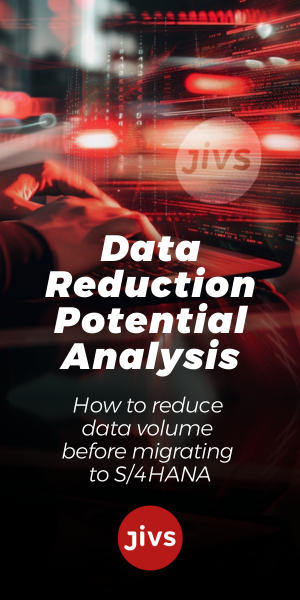As part of its ongoing digital transformation journey, an international provider of pharmaceutical wholesaling and logistics is set to implement SAP S/4HANA as part of a broader effort to modernize enterprise systems and enhance operational efficiency. The initiative aligns with the company’s strategic vision to optimize processes, leverage AI-driven insights, and improve supply chain agility starting in a key EMEA region’s dynamic healthcare and pharmaceutical distribution sector.
With decades of experience in the local market, this company is part of a global healthcare network, which operates in multiple countries, including the Czech Republic, France, Germany, Norway, the Netherlands, Spain, Turkey, and the United Kingdom.
The company’s IT Director shared insights into the company’s transformation plans, emphasizing the critical role of SAP S/4HANA in streamlining finance, logistics, and ERP functions.
“Today, we process approximately 130,000 invoices daily and serve 22,000 pharmacies out of the 30,000 in this region,” he explained. “Our legacy ERP system, has functioned primarily as an accounting tool rather than a fully integrated enterprise system. The move to SAP S/4HANA will enable us to digitize manual processes, enhance financial planning, and integrate AI-driven analytics.”
The transformation roadmap at the company is structured into three key phases:
1. ERP Assessment & Business Case Development (2025)
• Conducting a feasibility study to define current system gaps.
• Engaging local SAP partners for process mapping.
• Securing executive approval for the transition.
2. Implementation Kickoff & Rollout (2026)
• Launching a global SAP S/4HANA implementation in collaboration with the company’s international teams.
• Standardizing procurement, financial forecasting, and supply chain management processes.
• Migrating warehouse management systems (WMS) and financial operations into a unified SAP framework.
3. Full System Deployment & Optimization (2027-2028)
• Expanding AI-driven insights for demand forecasting and inventory management.
• Integrating extended warehouse management (EWM) to optimize stock replenishment.
• Enhancing real-time financial reporting and risk management.
The IT Director highlighted the organization’s focus on leveraging AI within the SAP ecosystem.
“We manage millions of invoices per month, yet financial visibility remains a challenge. AI-powered tools in SAP S/4HANA, such as predictive analytics and automated risk assessments, will bring much-needed transparency,” he noted. “Our priority is to apply machine learning models for stock replenishment and pricing strategies, ensuring cost efficiency and adaptability in market fluctuations.”
The move to SAP S/4HANA also positions this region of the company as a potential SAP center of expertise for the broader network of regional teams.
“This region has a deep talent pool of SAP professionals, and our goal is to leverage this strength to become an SAP knowledge hub within our organization,” the IT Director stated. “We have already engaged with SAP’s regional General Manager to explore collaboration opportunities.”
This initial regional team at this company is also implementing Workday for HR. The IT Director noted that the existing HR system is essentially a custom developed solution based on a local HR application, but is not an enterprise-grade solution. The company will not leverage Workday’s full feature set to begin with, and will continue for a time to manage some HR processes like payroll outside of Workday. And deep integration with SAP S/4HANA is not currently planned.
Reflecting on the transformation process, the IT Director emphasized the importance of:
• Prioritizing Employee Training: “Training should not be an afterthought—it must be a priority from day one to ensure smooth adoption.”
• Long-Term Vision Over Short-Term ROI: “Companies should avoid focusing only on immediate financial returns and instead take a long-term strategic view when investing in digital transformation.”
• Managing Organizational Change: “Shifting company culture is just as important as implementing new technology. Employees need to understand the ‘why’ behind the transformation.”
With a two-year implementation timeline, the company is focused on laying the groundwork for a seamless SAP S/4HANA deployment. The company anticipates that Spain’s SAP rollout—currently underway—will provide valuable insights into best practices for a multi-market single-instance strategy.
As the transformation progresses, the company aims to redefine its IT landscape, embracing cutting-edge AI, automation, and cloud-first strategies to stay ahead in the evolving pharmaceutical distribution industry.
What This Means for ERP Insiders
Industry fit remains a key factor for ERP. It’s worth noting that a significant majority—95%—of the world’s life sciences companies utilize SAP solutions, which include SAP S/4HANA. This high adoption rate underscores SAP’s strong presence in the pharmaceutical industry, encompassing various segments such as research and development, manufacturing, and distribution. SAP S/4HANA offers specialized functionalities tailored to the pharmaceutical sector, including features like SAP Advanced Track and Trace for Pharmaceuticals. This application assists companies in complying with international and regional drug serialization mandates, effectively combating counterfeit medications and enhancing supply chain transparency. Such capabilities are particularly beneficial for pharmaceutical distributors like Alliance Healthcare aiming to ensure product authenticity and regulatory compliance.
Define a clear cloud strategy: public vs. private. Selecting the appropriate cloud deployment model is crucial for migrations like this pharmaceutical company is undergoing. SAP S/4HANA offers two primary options: Public Cloud (GROW with SAP): Ideal for small to medium-sized businesses seeking rapid deployment with standardized processes. This model
leverages preconfigured best practices, allowing for swift implementation, often within weeks. However, customization options are limited, making it suitable for organizations that can operate within SAP’s standard configurations. Private Cloud (RISE with SAP): Suited for larger enterprises with complex requirements necessitating extensive customization.
This model provides greater control over the environment, supporting tailored processes and integrations. The tradeoff includes longer implementation timelines and potentially higher costs due to the bespoke nature of the deployment.
Single ERP instance across multiple countries is achievable. Deploying a single-instance ERP across multiple countries like this global company is endeavoring to do is a complex but strategic approach that can deliver standardized processes, improved compliance, and enhanced visibility across global operations. A “Global Template with Localization” approach ensures consistency while allowing flexibility for regional needs. This starts with a Global Core Model, consisting of standardized business processes for finance, supply chain, procurement, HR, and reporting; centralized master data management (MDM) and governance; and consistent security and compliance policies. Then there are localized configurations, including adjustments for country-specific tax regulations, legal compliance, reporting standards (GAAP, IFRS), and HR policies; language support and multicurrency capabilities; and integration with local banking, tax, and payroll systems. A multi-national single instance strategy must also contemplate regulatory compliance and data residency. Each country has unique regulatory compliance, security, and data residency requirements.
Companies must ensure ERP is configured for VAT/GST, electronic invoicing, statutory reporting (e.g., SAF-T, Making Tax Digital in the UK), and compliance with Sarbanes-Oxley
(SOX), IFRS, and local GAAP standards. And CIOs must ensure ERP complies with data protection laws like GDPR (Europe), CCPA (California), PDPA (Singapore), and China’s PIPL, and choose regional cloud hosting where data sovereignty laws apply.






